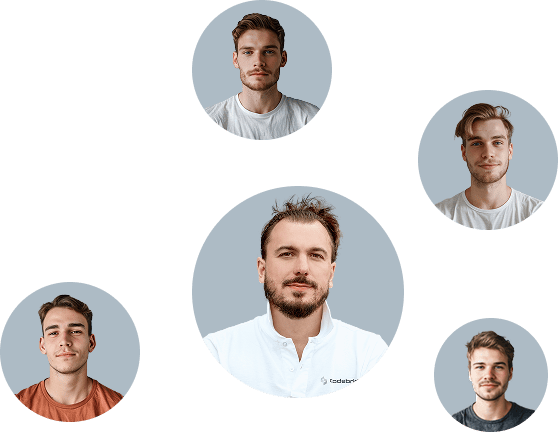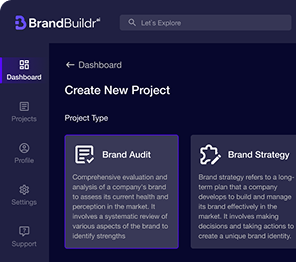The finance industry is changing drastically due to financial technology, or fintech. This disruptive trend has the potential to shift how people deal with their money and save or invest funds. Breaches, rising fees, and unexpected cancellations are all typical cases in the banking market. Implementing modern fintech software solutions makes the financial sector more open, transparent, and user-friendly for people and corporations.
This article highlights the driving forces behind the progress of the financial sector, the ideas and options it offers, and the influences and challenges it presents.

The Rise of Fintech and Open Finance
The fintech revolution is credited to numerous directional trends, including access to tech and tools. For example, smartphones, the internet, cloud technology, and other emerging infrastructure have facilitated innovative financial tools. The market demand for more convenient, accessible, and customized solutions has also driven the advancement of startups and larger firms. Conventional banks are disrupted by more user-friendly, affordable, and innovative software for fintech.
Some of these technologies are designed to challenge the old order. This means that traditional providers must adapt or disappear. Open finance is one of the principles that fuels the transformation of the conventional financial sector. It supposes secure financial data sharing between firms, other fintech businesses, and customers. Such data exchange makes it easy to provide new products, solutions, and services uniquely designed to meet diverse customers’ requirements. With its help, fintech can offer personalized services and products beyond what the traditional system offers.
Services and Solutions Enabled by Fintech and Open Finance
Fintech has introduced various innovative services and solutions, impacting diverse facets of the financial sector. Here are some of the most remarkable ones:
Digital Wallets and Mobile Payment Solutions
Apple Pay, Google Pay, and PayPal have significantly impacted the payment sector with digital wallets and mobile payments. Convenience enables users to save their necessary payment details and easily make payments using their smartphones or wearable devices. This form of stored card information promotes secure shopping. It does away with the need for physical cards, enhancing safety.
Mobile Banking and Peer-to-Peer Lending Platforms
Mobile apps have redrawn traditional banking lines, becoming tools for users to balance checks, transfer funds, and check statements from any location 24/7. This increases customers’ involvement and satisfaction levels, diminishing traditional banks' role.
For instance, Lending Club and Prosper use technology to allow borrowers to connect directly with investors and avoid intermediaries. This way, both sides get better rates and conditions. On the one hand, borrowers receive a loan on favorable terms from a financial institution at a low-interest rate compared to banks. On the other hand, investors receive higher returns than from traditional savings.
Personal Budgeting and Management Tools
Technological advancements have led to innovations such as the established players, Betterment and Wealthfront, which mainly use algorithms and apply machine learning to provide tailored financial advice with little human interference. They offer easily managed, cost-effective, and directly tailored client services.
Therefore, personal budgeting and financial management services have become more affordable to consumers. So they can easily optimize their decisions and plans to improve their financial well-being.
Benefits of Fintech
The rise of fintech has led to numerous advantages for consumers, businesses, and the financial sector. Let’s overview the main ones.
Increased Convenience and Accessibility
Fintech solutions have made financial services more accessible and convenient. People can now access all financial management tools through smartphones or other digital devices. The mobile banking app, for instance, helps the user check their balance and make fund transfers or bill payments without visiting the bank’s physical location.
Similarly, a digital wallet and payment feature offers more secure and effortless checkout processes as people no longer need to carry cash or physical payment cards.
Lower Costs and Better Performance
Technology and automation also produce financial products and services at a lower price than traditional institutions. Service automation and shorter processes save operational costs, meaning fees can be charged less or pricing can be better. An example is providing investment management by robo-advisors, which charge lower prices than traditional financial advisors and often achieve better results due to algorithms and a data-driven approach to portfolio management.
Personalization through AI and Machine Learning
Fintech companies use AI and ML platforms to offer personalized financial services. These platforms use personal behavior patterns, preferences, and financial ambitions to offer personalized recommendations. First, such a system processes large amounts of data. It distinguishes patterns, which enables it, for example, to tailor investment strategies or recommendations on how to budget to each user's peculiarities. Personalization helps to achieve better recommendations and engage the customer more.
Improved Access to Credits for Underserved Populations
Lending institutions operate with limited data sources and follow rigid credit scoring models. Therefore, the credit market should be saturated with many people or small firms with a brief credit history or a plan of action. When fintech firms integrate alternative data sources, including utility bills, rent, or social media compliance, they fill in the gaps and gain a complete image of the risk involved. It is one of the reasons for providing loans to many people and firms who do not get such a chance from more conventional lenders. Thus, economic efficiency favors fintech firms and fosters the development of the financial industry.
Financial Literacy and Education Resources
Many fintech platforms provide users access to various educational resources and tools to help them grow their financial literacy and knowledge and make more informed decisions about their money. Such resources often include interactive budgeting tools, investment education materials, debt management guides, and multiple personal finance calculators. Using these tools can help people develop better financial habits, allow them to choose better, and, as a result, achieve financial goals more effectively.

Challenges and Concerns of Fintech
While the rise of fintech presents numerous opportunities, it also brings challenges that must be addressed:
Cybersecurity and Data Privacy Risks
Due to the nature of the sensitive financial data they handle, financial software development companies are exposed to severe risks concerning cybersecurity. These risks pertain to unauthorized access to user information, data breaches, and other forms of cyber-attacks.
Solution: Fintech companies must implement encryption and multifactor authentication technologies, arrange for secure data storage and security audits, and impose access controls. Employee training is another critical aspect of cybersecurity, while regular audits and cooperation with relevant regulatory bodies and industry partners can serve as additional safeguards.
Lack of Human Interaction and Personalized Advice
Even though fintech enables convenience and automation, certain consumers may find traditional financial advisors' personal interaction and human element more valuable, particularly for more complicated financial decisions.
Solution: Fintech companies can add human advisors and other support personnel to help provide advice and guidance, particularly as the complexity of the financial situation increases. This can include video consultations, chatbots with human backup, or hybrid services that combine automated and human-centered services. Additionally, fintech platforms can use AI and machine learning to help provide personalized recommendations while allowing people to make decisions or intervene when necessary.
Regulatory Challenges and the Need for Effective Oversight
Due to its novelty, regulatory barriers and proper supervision are prevalent in the fintech industry. Fintech’s regulatory woes aim to protect consumers, guarantee a level playing field for competition, and comply with many financial rules.
Solution: Fintech companies must take the lead in collaborating with regulatory bodies to promote transparency and compliance. For instance, they may create regulations that encourage innovation while protecting consumers. Alternatively, fintech organizations may create robust governance and risk management structures that ensure compliance with relevant laws and requirements. Lastly, regulation bodies should be flexible and refine the regulations to adjust to the pace of change in fintech.
Lack of Financial Literacy Among Consumers
Although fintech makes financial management more accessible, consumers’ lack of financial literacy makes it difficult to comprehend or efficiently use these solutions.
Solution: Fintech companies can develop financial literacy opportunities for their clients or enhance existing ones. For instance, they can formulate interactive tutorials, webinars, and informational modules of various financial literacy levels on their websites. Cooperation with schools, non-profit organizations, and government bodies can provide financial literacy for end-users so they can make informed decisions when using fintech solutions.
Fintech has the potential to democratize financial services, making them more accessible, convenient, and personalized, but addressing cybersecurity, regulatory, and financial literacy challenges is crucial for sustainable growth.
Summing Up
Fintech is a rapidly improving area that changes the whole financial services industry. Fintech turns financial services to customers and businesses into its version of the democratized. Therefore, the technology sector has also played as a replacement for accessing traditional services.
Despite significant benefits like increased convenience, accessibility, and personalization, fintech has specific challenges. To succeed in the field, you must address cybersecurity, data privacy, regulatory supervision, and financial literacy issues. By using fintech development services responsibly, you can leverage the industry to increase financial inclusion and improve social and economic independence.
Are you thinking about creating your fintech product? Fintech development company Codebridge is here to help you. Do contact us so we can discuss and estimate your future project.

Heading 1
Heading 2
Heading 3
Heading 4
Heading 5
Heading 6
Lorem ipsum dolor sit amet, consectetur adipiscing elit, sed do eiusmod tempor incididunt ut labore et dolore magna aliqua. Ut enim ad minim veniam, quis nostrud exercitation ullamco laboris nisi ut aliquip ex ea commodo consequat. Duis aute irure dolor in reprehenderit in voluptate velit esse cillum dolore eu fugiat nulla pariatur.
Block quote
Ordered list
- Item 1
- Item 2
- Item 3
Unordered list
- Item A
- Item B
- Item C
Bold text
Emphasis
Superscript
Subscript





















.avif)



.avif)

.avif)


